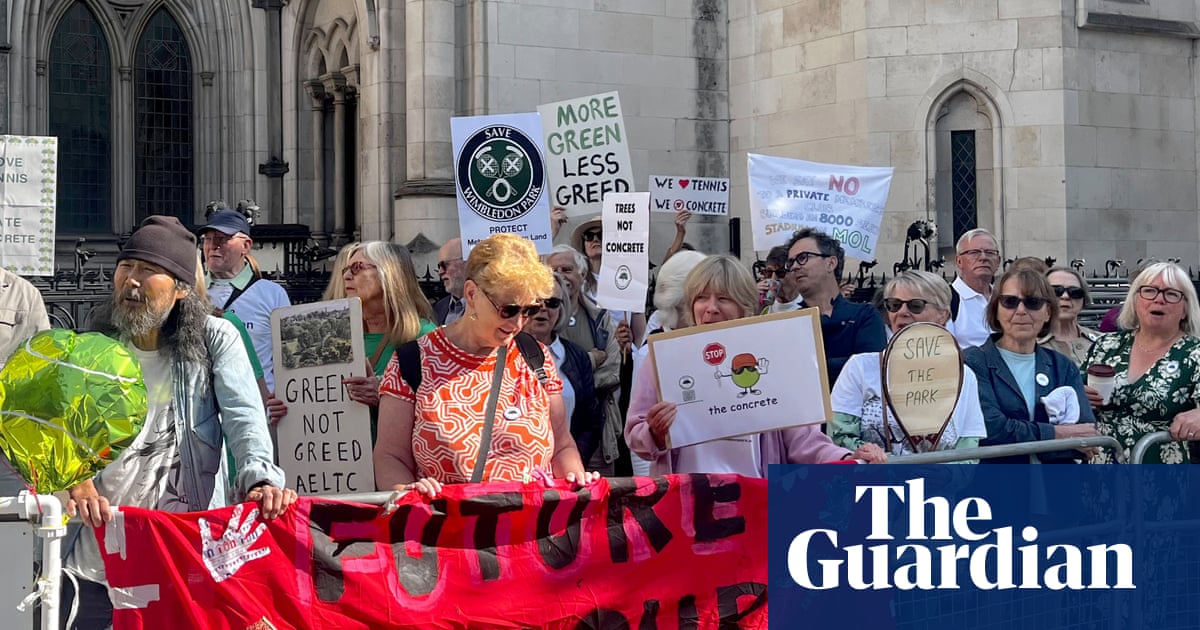A proposed expansion of the Wimbledon tennis site will go ahead after the high court ruled in favour of an original decision to allow a further 39 courts, including an 8,000-seat show court, on the grounds of the old Wimbledon Park golf club.
A judicial review, which started as this year’s 138th championship was under way, came after campaign group Save Wimbledon Park took legal action against the Greater London Authority (GLA) over its decision last year to allow the All England Lawn Tennis Club to almost triple its size.
Campaigners asked the judge to quash the original decision made in September 2024 and order it to be sent back to the GLA for reconsideration.
Residents have argued against the loss of green space as well as 10 years of disruption to the local area. They have also questioned its legality, as the proposed expansion would be on metropolitan open land, which has the same protected status as green belt.
The club’s counterargument is that what was once a private golf course will be converted into land that will offer access to the public, including a 9.3-hectare (23-acre) park, with further green space open through the year outside the championships. The scaling up of facilities is necessary for players and to maintain the prestige of the grand slam tournament, it says.
The dispute goes back to 1993 when the All England club bought the golf course land from Merton council for £5.2m. It signed a covenant agreeing it would not use the land other than for leisure, recreational purposes or as open space. The campaign group, which raised £200,000 before the review, believes the proposals have violated that pledge.
after newsletter promotion
Aside from the judicial review, a separate court action brought by the All England club will determine whether the land is for public recreation or protected by a statutory trust.
